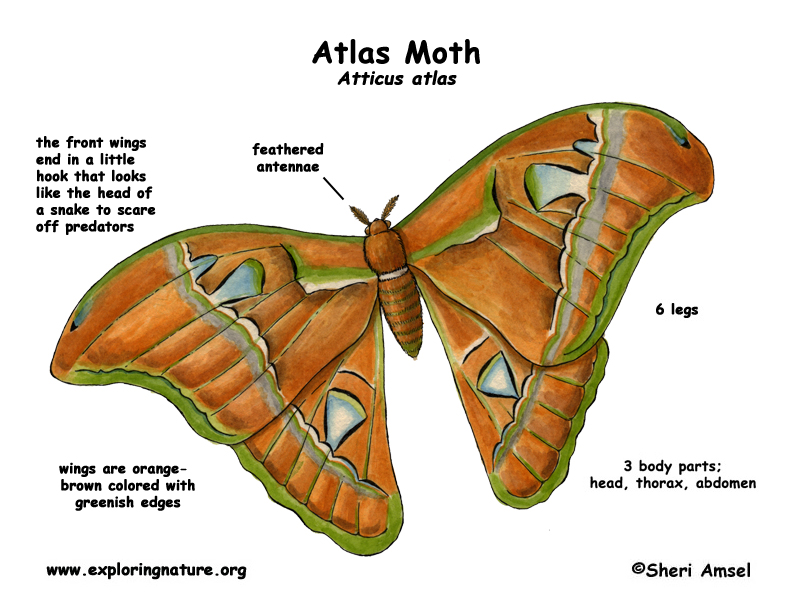

They are found in Southeast Asia.
They live in tropical, lowland and upper mountain forests.
They are orangey-brown colored with greenish edges. Their front wings end in a little hook that scientists think looks like the head of a snake to scare off predators. Their name came from the spots on their wings that make them look a bit like a map. The Atlas Moth is one of the largest moths in the world with wings up to 12 inches wide. They are strong flyers. They have feathery antennae.
They are active at night (nocturnal).
Adults live for only about 2 weeks. They do not eat at all, just mate and lay eggs and die. They do not even have a mouth in their adult form. Their caterpillars eat many trees including: citrus, avocado, guava, willow, etc.
Females lay eggs on the underside of a leaf. They hatch in 1-2 weeks and start eating.
Kingdom: Animalia
Phylum: Arthropoda
Class: Insecta
Order: Lepidoptera
Family: Saturniidae
Genus: Attacus
Species: A. atlas
When you research information you must cite the reference. Citing for websites is different from citing from books, magazines and periodicals. The style of citing shown here is from the MLA Style Citations (Modern Language Association).
When citing a WEBSITE the general format is as follows.
Author Last Name, First Name(s). "Title: Subtitle of Part of Web Page, if appropriate." Title: Subtitle: Section of Page if appropriate. Sponsoring/Publishing Agency, If Given. Additional significant descriptive information. Date of Electronic Publication or other Date, such as Last Updated. Day Month Year of access < URL >.
Amsel, Sheri. "Moth (Atlas)" Exploring Nature Educational Resource ©2005-2024. December 14, 2024
< http://www.exploringnature.org/db/view/262 >

